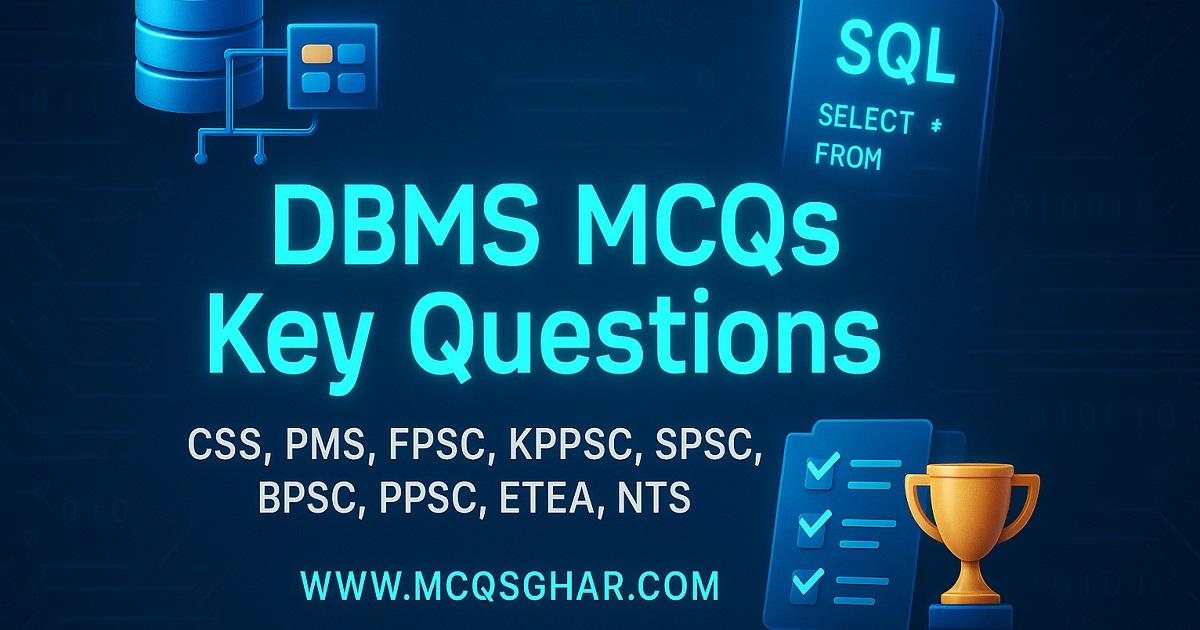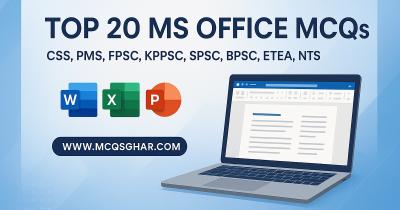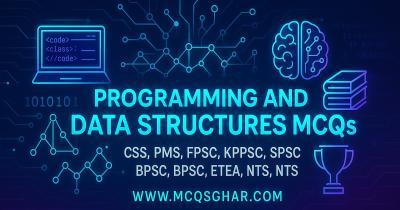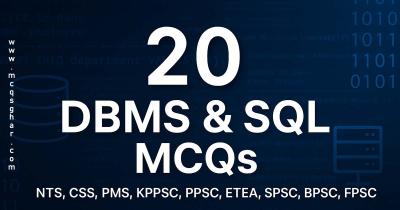بِسْمِ اللَّهِ الرَّحْمَنِ الرَّحِيم
DBMS MCQs: Key Questions for NTS, CSS, PMS, KPPSC, PPSC, ETEA, SPSC, BPSC, and FPSC Tests
Database Management Systems (DBMS) are a core topic in computer science syllabi for competitive exams. If you are appearing for PPSC, ETEA, or SPSC tests, mastering DBMS concepts, especially SQL, is vital. Here are 20 targeted MCQs to test your knowledge and prepare you for exam day.
1. What does 'SQL' stand for?
- Structured Query Language
- Standard Query Language
- Simple Query Language
- Sequential Query Language
Answer: Structured Query Language
2. A set of one or more attributes used to uniquely identify a record in a table is called a...?
- Foreign Key
- Super Key
- Candidate Key
- Primary Key
Answer: Primary Key
3. Which of the following is a DDL (Data Definition Language) command?
- SELECT
- UPDATE
- CREATE
- INSERT
Answer: CREATE
4. The property of a transaction that ensures all operations are completed successfully or none at all is...?
- Atomicity
- Consistency
- Isolation
- Durability
Answer: Atomicity
5. In the relational model, a row in a table is also known as a...?
- Tuple
- Attribute
- Domain
- Relation
Answer: Tuple
6. Which SQL command is used to retrieve data from a database?
- GET
- FETCH
- SELECT
- RETRIEVE
Answer: SELECT
7. Normalization is a process of...?
- Increasing data redundancy
- Reducing data redundancy and dependency
- Grouping data
- Encrypting data
Answer: Reducing data redundancy and dependency
8. Which normal form deals with the removal of transitive dependency?
- 1NF
- 2NF
- 3NF
- BCNF
Answer: 3NF
9. The 'JOIN' clause is used to...?
- Combine rows from two or more tables based on a related column
- Add a new row to a table
- Delete rows from a table
- Modify existing data in a table
Answer: Combine rows from two or more tables based on a related column
10. Which of the following is a valid type of database model?
- Hierarchical Model
- Object-Oriented Model
- Relational Model
- All of the above
Answer: All of the above
11. The 'WHERE' clause in a SQL query is used for...?
- Sorting the result set
- Grouping the result set
- Filtering records
- Joining tables
Answer: Filtering records
12. A key that is a primary key in another table is called a...?
- Composite Key
- Super Key
- Foreign Key
- Candidate Key
Answer: Foreign Key
13. Which command is used to remove a table from the database?
- DELETE TABLE
- REMOVE TABLE
- DROP TABLE
- TRUNCATE TABLE
Answer: DROP TABLE
14. What does 'DBMS' stand for?
- Database Management System
- Data Management Standard
- Database Manipulation Software
- Data Backup Management System
Answer: Database Management System
15. A database schema is defined by...?
- DML (Data Manipulation Language)
- DCL (Data Control Language)
- DDL (Data Definition Language)
- TCL (Transaction Control Language)
Answer: DDL (Data Definition Language)
16. Which of the following is an example of a DBMS?
- MS Excel
- MS Access
- MySQL
- Both B and C
Answer: Both B and C
17. The 'GROUP BY' clause is used with aggregate functions to...?
- Group rows that have the same values into summary rows
- Order the result set
- Filter the results
- Select distinct values
Answer: Group rows that have the same values into summary rows
18. Which command is used to change data in a table?
- MODIFY
- CHANGE
- UPDATE
- ALTER
Answer: UPDATE
19. A database is an organized collection of...?
- Files
- Records
- Data
- Tables
Answer: Data
20. Which data type would be most appropriate for storing a person's name?
- INTEGER
- VARCHAR
- BOOLEAN
- DATE
Answer: VARCHAR




